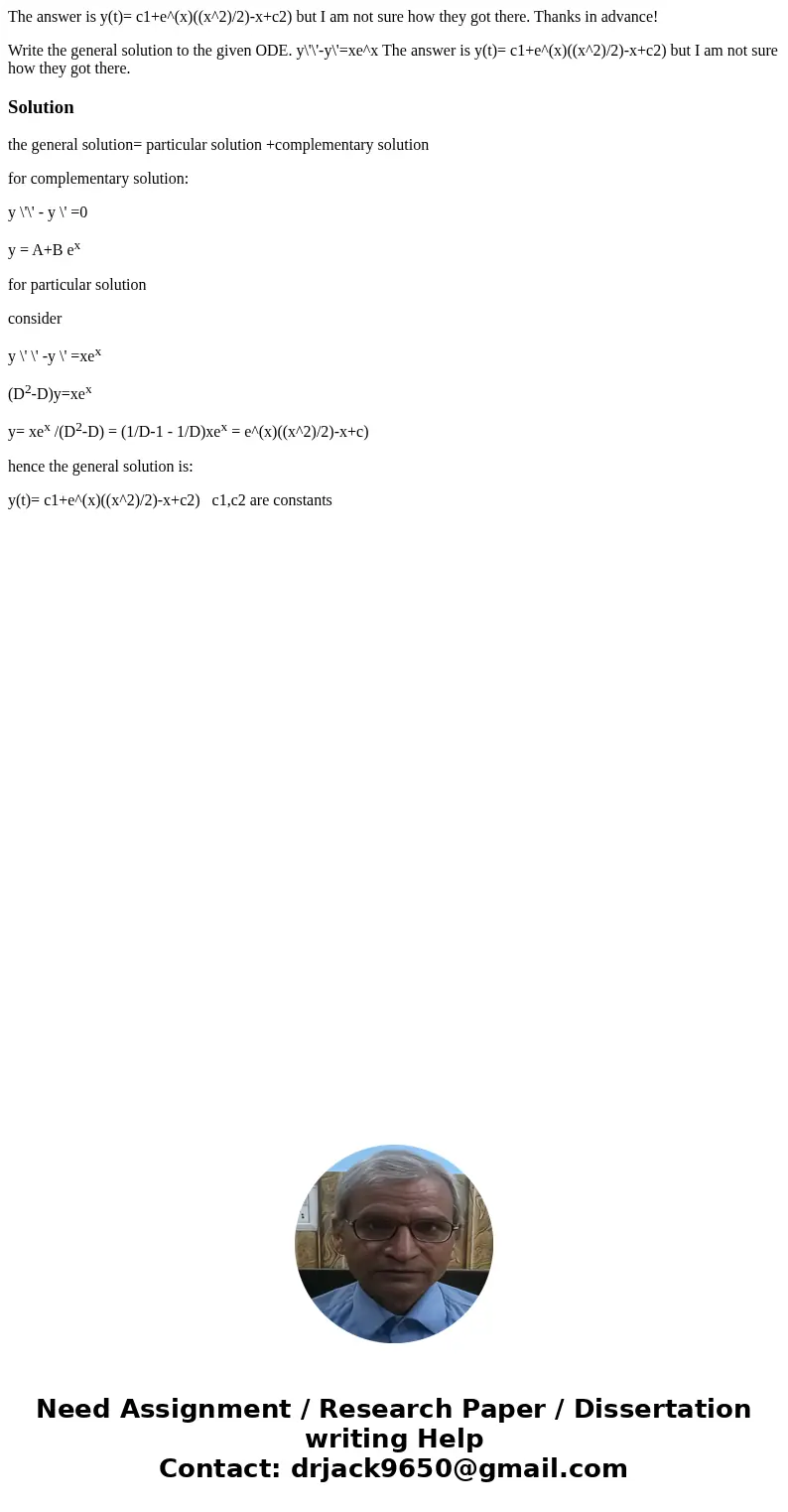The answer is yt c1exx22xc2 but I am not sure how they got t
The answer is y(t)= c1+e^(x)((x^2)/2)-x+c2) but I am not sure how they got there. Thanks in advance!
Write the general solution to the given ODE. y\'\'-y\'=xe^x The answer is y(t)= c1+e^(x)((x^2)/2)-x+c2) but I am not sure how they got there.Solution
the general solution= particular solution +complementary solution
for complementary solution:
y \'\' - y \' =0
y = A+B ex
for particular solution
consider
y \' \' -y \' =xex
(D2-D)y=xex
y= xex /(D2-D) = (1/D-1 - 1/D)xex = e^(x)((x^2)/2)-x+c)
hence the general solution is:
y(t)= c1+e^(x)((x^2)/2)-x+c2) c1,c2 are constants

 Homework Sourse
Homework Sourse